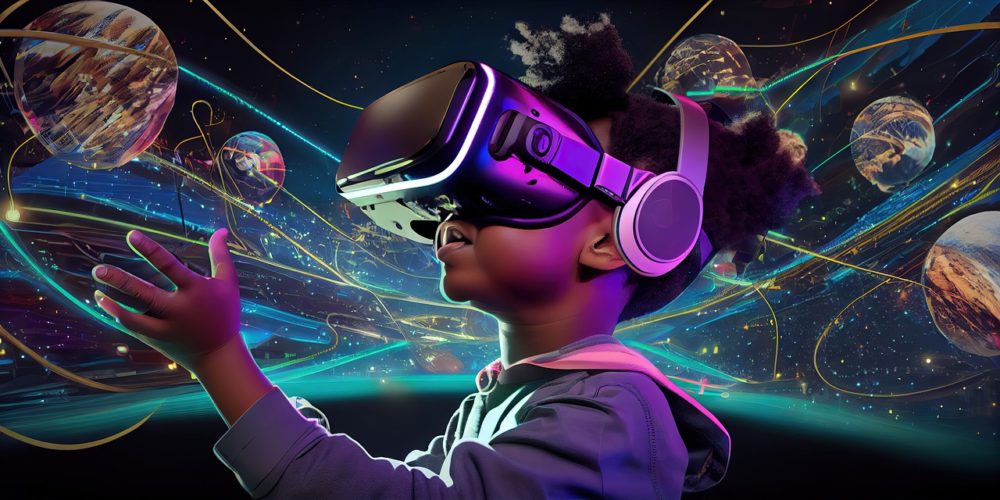The Role of Technology in Transforming Education

The education industry is one of the most fundamental aspects of society, and it plays a crucial role in shaping individuals and the communities in which they live. Over the past few decades, there has been a rapid and widespread integration of technology in various fields, and education is no exception. The use of technology in education has brought about significant changes and has transformed the traditional classroom model, leading to a more personalized and flexible learning environment. The purpose of this article is to discuss the role of technology in transforming education and explore the advantages, challenges, and future of technology in education. The article aims to provide a comprehensive overview of the impact of technology on education and the importance of embracing it to improve the quality and accessibility of education.
Key Takeaways:
- Technology has rapidly integrated into the education industry, leading to a more personalized and flexible learning environment.
- Advantages of technology in education include greater access, personalized learning, collaboration, flexibility, and cost-effectiveness.
- Challenges in education technology include infrastructure, the digital divide, teacher training, and overreliance on technology.
- Examples of technology in education include online learning platforms, mobile learning, virtual and augmented reality, and gamification.
- The future of technology in education looks promising with trends like AI, learning analytics, adaptive learning, immersive learning, and IoT. Addressing challenges and balancing technology with critical thinking is essential for a successful educational transformation.
Advantages of Technology in Education
The integration of technology in education industry has brought about many advantages, making learning more accessible, flexible, and engaging. Some of the primary advantages of technology in education are:
- Greater Access to Education: Technology has expanded access to education by breaking down geographical barriers and providing opportunities for students to learn remotely. Online learning platforms, digital libraries, and e-books have made it possible for students to access educational resources from anywhere in the world.
- Personalized Learning: Technology has made it possible to create personalized learning experiences for students. Adaptive learning software uses data to adjust the pace, content, and difficulty of learning material to match the individual learning needs of students.
- Collaboration and Engagement: Technology has made it easier for students to collaborate and engage in their learning. Video conferencing, online discussion forums, and collaborative tools make it possible for students to work together on projects and share ideas, even if they are not physically in the same location.
- Flexibility and Convenience: Technology has made learning more flexible and convenient, allowing students to learn at their own pace and on their own schedule. With the use of technology, students can access educational resources at any time and place that suits them.
- Cost-Effective: Technology has made education more cost-effective by reducing the need for physical resources such as textbooks, paper, and classroom space. Online learning platforms and digital resources are often cheaper than traditional classroom materials, making education more affordable and accessible to students.
Overall, the advantages of technology in education have transformed the learning experience for students, providing greater accessibility, personalization, collaboration, flexibility, and cost-effectiveness.
Challenges of Technology in Education
While technology has brought about many advantages in education, it has also presented some challenges that need to be addressed. Some of the primary challenges of technology in education are:
- Technological Infrastructure: One of the major challenges of technology in education is the need for reliable and up-to-date technological infrastructure. This includes the availability of devices such as computers, tablets, and smartphones, as well as access to high-speed internet.
- Digital Divide: The digital divide refers to the inequality in access to technology between different groups of people. This can be a significant challenge in education, as some students may not have access to the necessary technology to participate in online learning or to complete digital assignments.
- Teacher Training: The integration of technology in education requires teachers to have the necessary skills and knowledge to use technology effectively in the classroom. However, not all teachers have received adequate training in the use of technology, which can hinder its effectiveness in education.
- Overreliance on Technology: Overreliance on technology can be a challenge in education, as it can lead to a lack of critical thinking and problem-solving skills. Students may become overly dependent on technology to solve problems, which can hinder their ability to think creatively and independently.
Examples of Technology in Education
There are several examples of technology in education that have transformed the way students learn and interact with educational material. Some of the most common examples are:
- Online Learning Platforms: Online learning platforms such as Coursera, EdX, and Udemy provide students with access to a vast array of courses and educational resources. These platforms offer flexibility in terms of course schedules, and students can learn at their own pace.
- Mobile Learning: Mobile learning involves the use of mobile devices such as smartphones and tablets to deliver educational content. This approach is particularly useful for delivering short-form content, such as videos, quizzes, and games.
- Virtual and Augmented Reality: Virtual and augmented reality technology is used to create immersive learning environments, allowing students to experience educational material in a more interactive and engaging way. For example, virtual reality simulations can be used to teach students about historical events or scientific concepts.
- Gamification: Gamification involves the use of game elements such as points, badges, and leader boards to make learning more engaging and fun. Gamification is often used in online learning platforms and educational apps to encourage student participation and increase motivation.
These examples demonstrate the variety of technology in education and its potential to make learning more accessible, interactive, and engaging. As technology continues to advance, it is likely that we will see even more innovative ways of integrating technology into education.

The Future of Technology in Education
The future of technology in education is exciting and full of potential, as new technological advancements are constantly emerging. Some of the most promising trends in the future of technology in education are:
- Artificial Intelligence (AI): AI has the potential to transform education by creating personalized learning experiences, automating administrative tasks, and improving the assessment of student performance. AI-powered chatbots can also provide students with instant feedback and support.
- Learning Analytics: Learning analytics involves the use of data analysis and visualization tools to identify patterns in student learning behaviour. This information can be used to personalize learning experiences and improve student outcomes.
- Adaptive Learning: Adaptive learning technology uses data analysis to adjust the pace, content, and difficulty of learning material to match the individual learning needs of students. This technology has the potential to provide personalized learning experiences for every student.
- Immersive Learning: Immersive learning technologies such as virtual and augmented reality are becoming more advanced and accessible. These technologies can create more interactive and engaging learning experiences that are closer to real-life situations.
- Internet of Things (IoT): IoT technology can be used to create smart classrooms that are connected to the internet and equipped with sensors and devices that can automate administrative tasks and improve the learning experience.
These trends demonstrate the potential for technology to continue transforming education in the future. However, it is important to address the challenges associated with technology in education, such as the digital divide, teacher training, and the need for critical thinking and problem-solving skills. By investing in technological infrastructure, equal access to technology, and on-going teacher training, we can create a future in which technology is used to provide every student with a high-quality and personalized education.
Conclusion
In conclusion, technology has the potential to revolutionize education and transform the way we learn and interact with educational material. The advantages of technology in education include improved access to educational resources, increased flexibility, and enhanced engagement and motivation. However, there are also challenges that need to be addressed, such as the digital divide, teacher training, and the need for critical thinking and problem-solving skills.
Looking to the future, there are several promising trends in technology that have the potential to transform education even further. These include AI, learning analytics, adaptive learning, immersive learning, and IoT. By investing in technological infrastructure, equal access to technology, and on-going teacher training, we can create a future in which technology is used to provide every student with a high-quality and personalized education.
It is important to strike a balance between the use of technology and the development of critical thinking and problem-solving skills, to ensure that students are equipped with the skills they need to succeed in the modern world. By doing so, we can create a more equitable and inclusive education system that empowers every student to achieve their full potential.
Would you like to receive similar articles by email?





